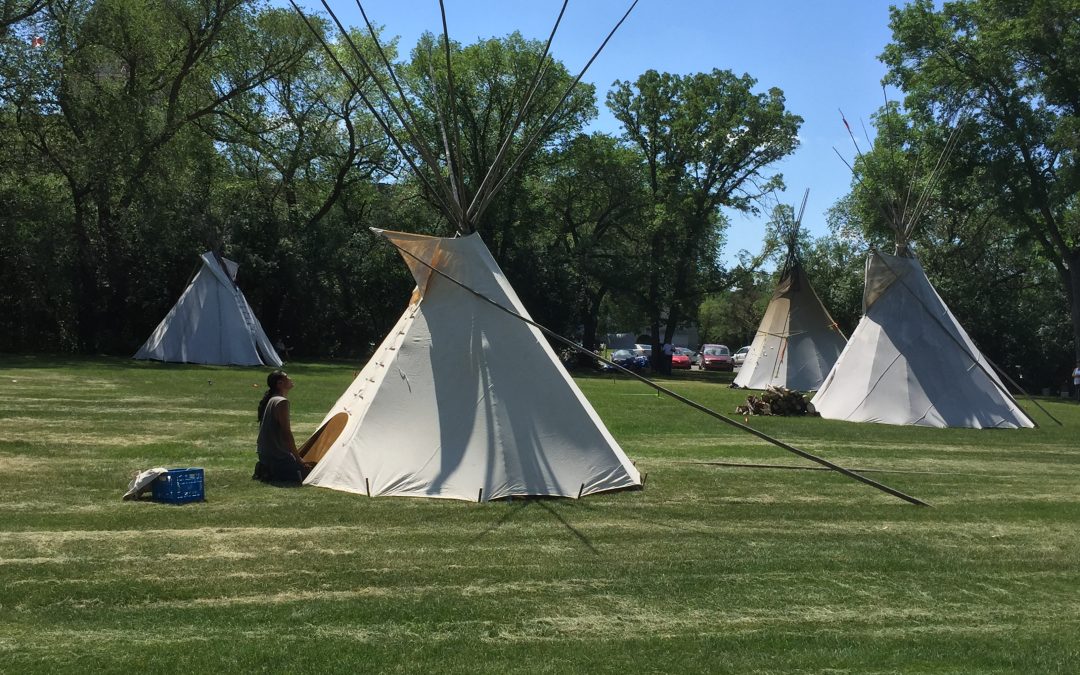By: Carol Baldwin, Local Journalism Initiative Reporter, Wakaw Recorder
February is Indigenous Storytelling Month. During the winter months, the tradition of storytelling is an important tradition that is used to pass on knowledge from generation to generation, sharing culture, history, teachings, spirituality, and language. Indigenous stories are the fundamental ways for teaching ceremonies and ways of life of Indigenous peoples, and are not viewed as entertainment, but rather as messages from one generation to the next. The stories can be funny, sad, scary, or disturbing and may not all have happy conclusions. When they are told they must remain as true to their origins as possible.
Many times, the focus of Indigenous Storytelling is solely on First Nations storytelling, but it is important not to overlook Métis storytelling. Every Métis family and community has their unique way of telling stories. Their stories provide a sense of belonging and identity by sharing the Métis worldview, history, and cultural teachings, and preserving them for future generations. Métis storytellers often use humour to teach right and wrong through characters such as the trickster Wiisakaychaak. Laughter has always been a crucial element of Métis life and is reflected in the Michif language. The value of humour in their culture is something that cannot be over-emphasized.
In the introduction to “Stories of Our People: A Métis Graphic Novel Anthology” compiled by Darren R. Préfontaine, he explains that the Old People tell stories to explain everyday things and those things that are difficult to understand. These stories are not always “make-believe” and the Old People, moreover, believe them to be true. The stories usually do have an undercurrent of truth and therefore, should not be easily dismissed as myth or superstition. Equally important is the fact that the stories are important to the Métis storytellers themselves, they connect the storyteller to their Elders, ancestors, and language which is intricately tied to these stories. When the stories are told in the Michif language, they express a Métis worldview that does not easily translate into English. The storyteller and/or Elder may tell the stories in English, but they are often thinking in Michif when they are telling them, and as a result, much of the stories’ original meanings almost always get lost in translation.
Métis stories often have similar characters, but different meanings and endings from their Cree, Ojibway, and French-Canadian stories. In true Métis fashion, their stories are a blend of characters taken from neighbouring or contributing cultures, and who are woven into a new tradition that is unique, vibrant, and highly memorable. Métis storytelling includes stories about malevolent spirits that do harm or who go against the Creator and/or society, and Trickster-based creation or morality stories. Trickster stories are often fun and humorous. Essentially, the Métis tricksters are at their core good characters that have some very human weaknesses, including gluttony and selfishness. Trickster stories often teach consequences.
Whiitigo are dark, malevolent characters. Also known in Michif as “Kaamoowachik,” they represent the ever-present danger of starvation in hunting and gathering cultures, but there can also be human Whiitigos. These are people who do dreadful things, who are possessed by a malevolent spirit, and are people who shun the Creator and the moral code of human society.
Roogaroos, Métis werewolves, are some of the most interesting creatures in Métis stories, according to Préfontaine. The Métis Roogaroo emerged from two traditions: the French werewolf (loup garou) via French Canada and the Cree (and/or Dene) Shape-shifter. Loup garous and Roogaroos can turn into a variety of forms including black dogs, pigs, horses, and even bears in some stories. The Métis tradition treats the Roogaroos as more of a lost soul as opposed to an active agent of evil and malevolence.
Traditionally, stories were reserved for the winter months. They were a means of passing the time during the coldest and darkest months of the year, but they were more than just ‘something to do.’ During the winter, the pace of life slowed, and the time that was not taken up with hunting and foraging could be used to share teachings with the young ones. With still half a month to go, there is still time to check out the local library for books to read like Métis author and Elder, Maria Campbell’s, “Stories of the Road Allowance” or Cort Dogniez’ “Road to La Prairie Rond.”
